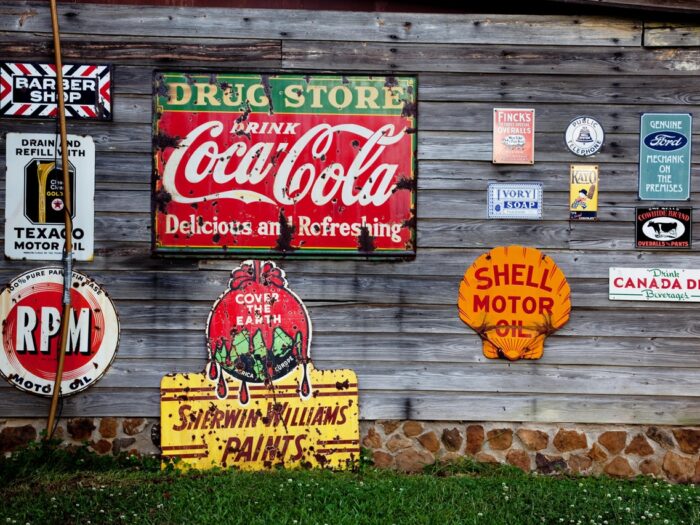Not sure how to build a successful marketing campaign? We’ve all been there.
Unfortunately, marketing isn’t simply throwing words on a page and hoping for the best. It’s a little more complex, and all the more fun for it.
So here are our top 8 tips on how to credit a successful marketing campaign – whether you’re selling yourself, your products, or your business.

1. Be crystal clear in your objectives
The key to any successful marketing is to have a clear goal. What are you trying to achieve with this campaign? Only by having clear objectives can you measure the success of your campaign.
A good example of this is Coke’s One Brand campaign in the UK. Coke realised that their “healthier” drinks weren’t exactly causing a fizz in the UK market. So they changed the recipe of their marketing and brought their four product under one global brand. Makes sense, right?
The goal was to create a thirst for all of their products, and only in knowing that did they come up with their One Brand idea. Cheers to that.
2. Don’t do too much at once
As the philosopher Ron Swanson once said, “never half-ass two things, when you can whole-ass one”. Beautiful words reflecting a beautiful sentiment.
You have to be ruthless and decisive when it comes to marketing strategy. What’s working, what’s not?
The best campaigns drive home a homogenous and unambiguous message. Becoming bogged down trying multiple strategies at once is a surefire way to reduce the overall effectiveness of your campaign.
For smaller businesses or agencies, it’s important to find a message that your business believes in. After all, the average internet-user is becoming more and more savvy or inauthentic brands.
3. Make sure the campaign has impact – if people don’t notice it, you’re wasting money
All campaigns need to turn heads, but some take this further than others. Protein World’s “Are you beach body ready?” ads on the London Underground elicited a barrage of complaints over ‘body shaming’ but Protein World’s CEO, Arjun Seth, stuck with the campaign and their sales tripled.
As the saying goes, all publicity is good publicity.
But, for smaller businesses, with more to lose, it’s better to be cautious. Using campaigns that play upon people’s emotions is a proven way to increase their reach as people are far more likely to talk about stories that have emotional pull.
Working with a charity is a good way of gaining the right kind of attention. Charity may start at home, but it can help build a business.
4. Make sure it communicates your message
While this sounds simple, in many cases marketing campaigns have failed to get across to people what they’re selling or promoting. The digital world is saturated with people trying to sell something, and market everything. Campaigns build intelligently in order to reach your right target demographic.
For companies that can’t afford large marketing campaigns, networks like Instagram or Snapchat are a perfect way to directly convey effective campaigns that would cost a fraction of the cost of one build by, say, Pepsi (we’re being soda agnostic in this blog).
Good Greens health foods built its brand from nothing, using only networking from friendly local bloggers. Comarketing with similar firms is another effective means of raising brand profile.
5. Make sure it persuades people of what you want them to do
For most brands this is a simple case of “promote a product in order to increase sales”. Simple, no?
But it can be difficult to strike the right balance between promotion and audiences feeling like they’re having a product pushed on them.
The ALS ‘Ice Bucket Challenge’ viral campaign or Save the Children’s ‘If London were Syria’ ads both engaged audiences effectively but in completely different ways.
Many companies were able to raise their own reputation and profile by participating in the Ice Bucket Challenge in creative ways, and it is important for all businesses to keep a close eye on internet trends to stay ahead of the game.
After all, the internet moves quickly, and if you don’t keep up, you won’t be able to catch up. No one wants to tweet about yesterday’s news. #Fail
6. Make it funny
Having a sense of humour is also crucial for smaller businesses or agencies.
Lacking the reach of larger companies, humorous videos and pictures are one of the best ways to get people interested in your brand in the first place – look at how DollarShaveClub spent $4500 on an ad that got more than 20 million Youtube views and propelled them to instant fame!
The most successful marketing campaigns in recent years have been tickling their audience’s funny bone rather than going for the hard sell.
A good way of doing this is by getting involved in whatever is already happening. For instance, jump in on a hashtag, or have a voice in other social media campaigns. People are already aware of it, so the hard work is done. Just make sure you come in with a zinger, rather than a stinker.
Snickers took advantage of Jeremy Clarkson’s fracas, and people went nuts for it. (Pun intended).
7. Execution – campaigns are 1% strategy, 99% execution
While a sound overall strategy is always the basis of a solid campaign, it is the detail that wins the day.
Many a campaign has fallen flat because of a gaffe that was overlooked or because of technical glitches (which, admittedly, aren’t always avoidable). In the days of mass digital literacy, it is seen as inexcusable for brands to mess up on social media.
Sony’s ‘Black vs. White’ PSP ad campaign back in 2006 quickly descended into ridicule and condemnation over racial overtones which should have been obvious when designing the campaign. Similarly, Pepsi didn’t fare well in a recent campaign featuring Kendall Jenner, and left a bad taste in a lot of people’s mouths.
8. Adapt as you go
Large companies often have trouble adjusting the direction of their campaign owing to their sheer complexity and size, and will often abandon a campaign if it proves to be too much of a disaster.
But, in a smaller business it is easier to pick up and adjust any marketing drives, allowing more fluid campaigns that can change as frequently as the company can assign someone to manage their Instagram, Facebook, Snapchat account or their website.
Even internet advertising and sponsorship is far more flexible than the multi-million pound campaigns of larger firms and can be changed to keep track of current social media trends. If a campaign is proving successful you can quickly reinforce it; if it is having little impact, you can quickly alter or pull it altogether.
So, there you have it! Not every campaign is designed equally. But if you follow these eight simple steps, you should stand a fair chance of creating a meaningful, and successful marketing campaign.
Remember to keep track of your marketing budgets with cash flow forecasting. You can sign up for a free trial to try out Float now!
Happy marketing!

